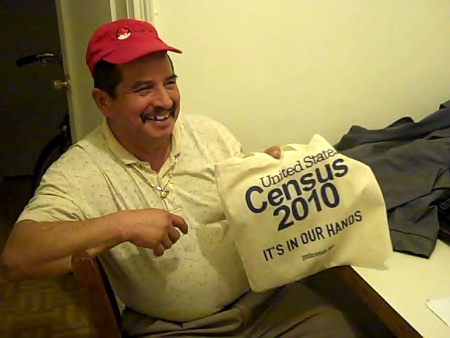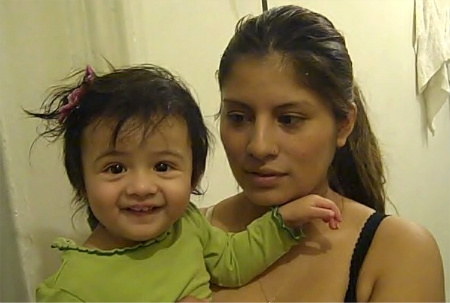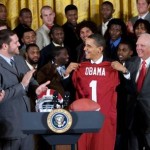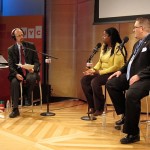WNYC, New York public radio on Wednesday ran a piece by reporter Annie Correal on New York immigrants whom the Census considers the hardest to reach. Here, Annie narrates how she went about reporting the piece, which you can listen to by pressing play below.
[audio:http://audio.wnyc.org/news/news20100310_census_nyc_correal.mp3]Also Wednesday, as part of Feet in Two Worlds’ coverage of the 2010 Census, WNYC’s The Brian Lehrer Show hosted a live conversation on New Yorkers at risk of being undercounted.

By Annie Correal, El Diario/La Prensa and Feet in 2 Worlds reporter
As part of El Diario/La Prensa’s coverage of the 2010 Census, I traveled to two hard-to-count Hispanic neighborhoods to explore the obstacles to getting people counted and what’s at stake for undercounted communities.
After talking to city planner Joseph Salvo about the neighborhoods that are hardest to count in New York City, I decided to focus on the area surrounding Jackson Heights in northwest Queens, which has seen an influx of new immigrants and where in some places only 40% of the population mailed back their forms in 2000.
To identify the Hispanic areas of the city where it may be difficult to get an accurate count this year, I also studied the map of neighborhoods with low mail response rates in 2000 and used a new mapping tool developed by CUNY to help outreach efforts in hard-to-count areas.
The area I chose in Queens has all the characteristics of hard-to-count immigrant neighborhoods in New York City: newly arrived, undocumented immigrants, non-English speaking households, and overcrowded housing, with a lot of illegal subdivisions or people living in basements. I talked to the city census coordinator, Stacey Cumberbatch, local census officials, and elected officials in the area about how the Census Bureau plans to overcome these obstacles.
They told me that this year, the bureau has gone beyond Spanish-language commercials and posters. It has partnered with community organizations who know how –and where– to find hard-to-reach immigrants, including the hardest to reach contingent in the area: undocumented immigrants.
Valeria Treves, director of New Immigrant Community Empowerment (NICE), explained, “Our community members are themselves going to be the ones walking at the day laborers stop, tabling at the train stations, going to the taco trucks, going to the Herbalife meetings, going to all the places where immigrants or undocumented immigrants might congregate and talking to them about the importance of the Census.”
But none of the officials could say for certain whether the effort was working. Do undocumented immigrants plan to fill out census questionnaires, or are they too afraid? I went out to ask people who make up this hard-to-count contingent – at the day laborer stops, food trucks and CD stands on Roosevelt Avenue, and in their own homes. Their surprising answers led me to conclude that the city’s neighborhood-oriented, grassroots effort seems to have reached a lot of people, but that there are still obstacles to getting ‘behind the door’, as Salvo puts it. This story became my first project for Feet in Two Worlds, a news piece for WNYC.

For my next story, I traveled to Bushwick, a poor, predominantly Hispanic neighborhood in northern Brooklyn which was undercounted in the 2000 Census and lost vital federal funding as a result. I wrote about the ‘census cycle’: how poor, immigrant neighborhoods desperately need funding now, precisely because there was an undercount in 2000. I focused on how overburdened health care facilities are in this area as a consequence of the undercount.
Here I interviewed hospital officials, as well as local community group leaders and the head of the local census office, Alvin Aviles, who discussed whether he anticipates a change this time around. My focus, though, was Manuel Zuniga, a 25-year-old from Ecuador who has to travel to Manhattan for medical care.
“I went around in circles for around a month, and then they told me they didn’t know what the problem was,” he told me, referring to the paralyzing pain in his right arm which began with an injury three years ago. “They told me if I wanted to get help I’d have to go to Manhattan.”
Alec Hamilton, a researcher at The New School, contributed to this report.
The Feet in Two Worlds project on the Census is made possible thanks to the generous support of the 2010 Census Outreach Initiative Fund at The New York Community Trust and the Laurie M. Tisch Illumination Fund.




